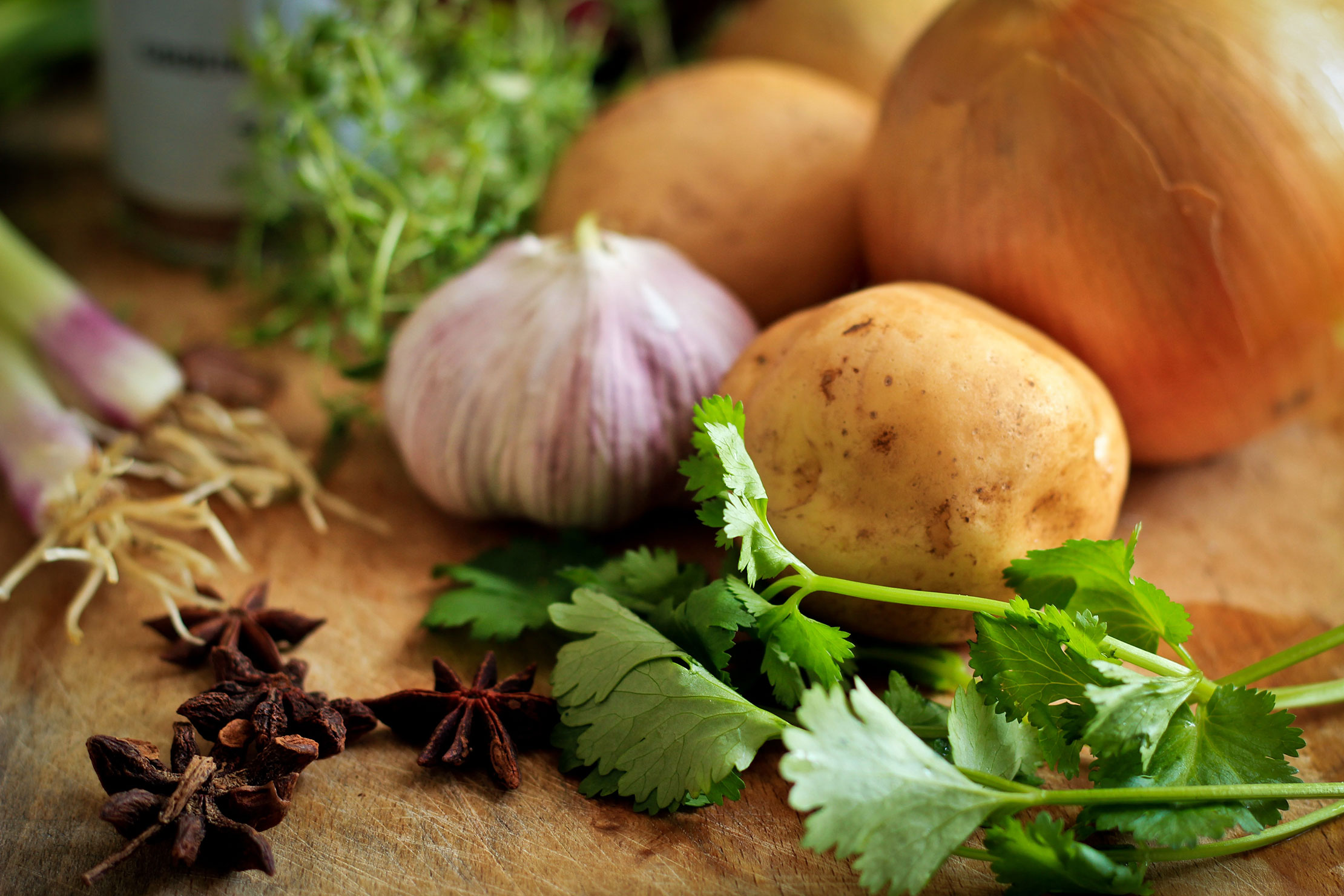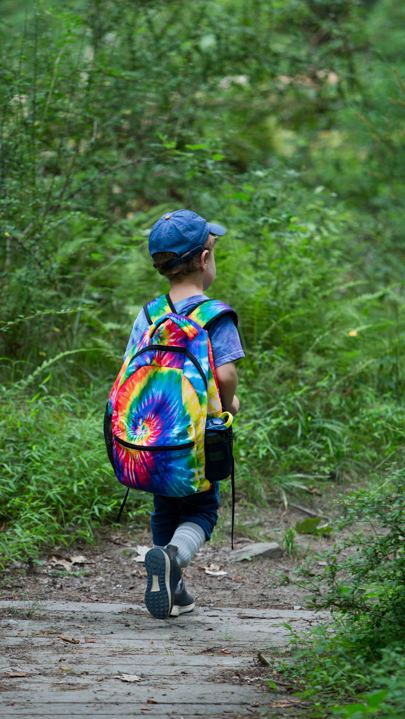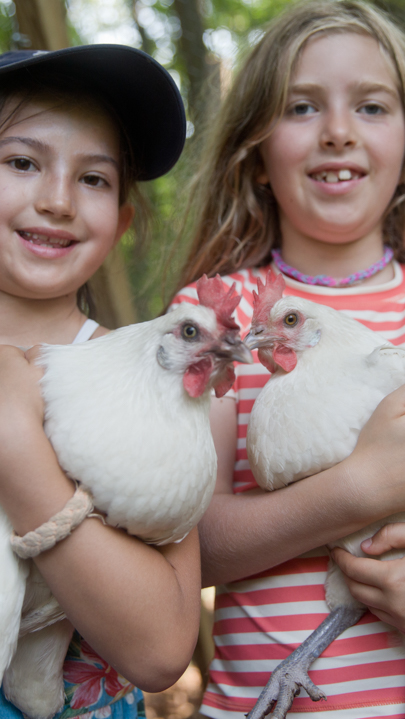Nature’s Palette

Our cooking instructor, Eva Szigeti, paints an extraordinary picture of the changing colors in nature’s palette and includes fascinating notes on using plant dyes, including a DIY how-to…
After what felt like an almost never-ending winter, it is a great joy to finally enter the season of budding colors. Snowdrops, violets, and skunk cabbage might be the first signs of spring, but they never quite convince me that the winter is gone for good. It is when the leaves on the trees emerge that I feel assured: there is no way back to winter-land. The change of scenery is usually sudden. With it, nature bursts into color. We leave behind the lifeless shades of grey and brown and celebrate the soft colors of spring. Shades of fresh green, with occasional dots of color, dominate the landscape. Comforting and calming colors of early spring slowly mature and change. Plants soak up the sunshine and richer colors come to life. The color palette of nature reaches near perfection on a wild flower meadow in June or on a field of wild lupine in July.
As the year progresses, the colors of nature become even more full and rich. The warm shades of the fall landscape bring another visual highlight of the year. The reds, golden yellows, oranges, and rusty browns radiate back the energy of the sun as if to charge us with energy before the world around us fades again into the greyish-brown realm of early winter.
Nature has everything we need, including color. In fact, there were no synthetic dyes until the mid 19th century. Still, the world of humans had not been colorless. Until then, dyes and pigments came exclusively from nature. Think of old masters: Michelangelo, Botticelli, Vermeer, Rembrandt, Bosch…. They painted with the colors of nature. The fibers of traditional oriental rugs and renaissance tapestries were all dyed with natural materials. So were the luxurious dresses of emperors and empresses of the past. Fabrics of rich colors symbolized status, and their cost was high. Lower classes dressed in browns and grays, shades that were the easiest and cheapest to create.
Dyeing is not unlike cooking. It involves applying heat to extract, in this case, not flavor but color. A large pot is utilized to make a dye bath. The plant material gets simmered in water in order to extract pigments. Then fabric or fiber is immersed in the (warm or cold) colored liquid to absorb the dye. Some dye material might be hiding in your kitchen. Tea, coffee, turmeric, or onion skin all contain pigments that get easily absorbed by natural fiber or fabric. Henna used for tattooing and dyeing hair also creates beautiful rusty reds on fabric.
The process is fun and satisfying. We can start by collecting plant material suitable for dyeing (marigold, goldenrod, black walnut etc.), then we cook the colored brew. If our goal is to create a solid color fabric, we just need to put the textile into the dye bath. Otherwise, we apply our artistic imagination and prepare the fabric by folding it to create pattern. I like to get inspired by the techniques of ancient Japanese Shibori.
When working with plant dyes, we get the satisfaction of knowing that the colors come from renewable resources rather than petroleum. Natural material such as silk, wool and cotton absorb the dyes well. Although the use of mordants (solutions that act as binding agents) usually results in richer colors, for safety and environmental reasons, I prefer not to use them.
Feel free to experiment. Nature is forgiving. Even unexpected results have their beauty. Sometimes we end up with a color or pattern that is much more beautiful than anything we could have planned. Mother Earth provides everything we need.
Dyeing Cotton Fabric with Annatto
Annatto seeds come from Central and South America. Traditionally, they were used as body paint. Annatto is widely used today as a food coloring. The orange color of the supermarket cheddar comes from these seeds!
Annatto dye bath produces yellow, golden yellow, orange-yellow, or orange hues, depending on the amount of seeds used, and the weave and thickness of the fabric. Silk and wool can also be successfully dyed with annatto seeds.
- 1 cup annatto seeds
- medium piece of cotton fabric or 2-4 cotton bandanas
- pot and stirring spoon (used exclusively for dyeing)
- iron for ironing the fabric, rubber bands, string, thread and needle (you may only need one of these, depending on the folding technique you choose)
- plastic gloves to protect your hands
Choose white or off-white fabric/bandanas for your project. Unbleached fabric will produce deeper color.
Gently simmer the annatto seeds in about a gallon of water for one hour. In the meantime, fold the fabric using one of the Shibori techniques. This is a link to one of many videos showing how to use the Shibori folding techniques. In this video synthetic dyes are used, so please disregard their dyeing instructions.
Gently rinse the folded fabric in lukewarm water, making sure that it is wet throughout. This will assure even absorption of the dye liquid.
Turn off the heat under the pot. The dye liquid can be strained, but leaving seeds in the dye bath during the whole dyeing process will produce richer color. Put the fabric into the dye bath and let it steep for at least 4 hours or overnight. Take the fabric out of the pot. Rinse under running water and squeeze out excess water. Unfold the fabric and be ready to be surprised! Put out your fabric to dry. Before further use, hand-wash the dyed fabric.





